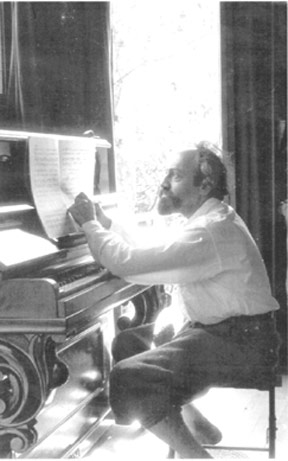Voices in the Wilderness – Ernest Bloch

It may seem surprising to begin a study of American Neo-Romantic composers with a European-born figure who did not come to the United States until he was thirty-six years old and whose musical identity is associated chiefly with his effort to express his Jewish heritage. The decision to make Ernest Bloch the cornerstone of this study is based on the premise that his musical output embodies precisely those qualities identified in the introduction as central Neo-Romantic aesthetic values: chiefly, the primacy of emotion, spirituality, mood, and drama; that Bloch’s musical language, a fusion of both French and German elements shaped through deep immersion in both musical cultures during his formative years, represents the general vocabulary of American Neo-Romanticism: a fluid, flexible continuum from diatonic modality to true atonality, from simple triadic consonance to complex chromatic dissonance, utilized according to the expressive intentions of the particular work involved or passage thereof; and that Bloch’s music projects the strong sense of purpose and powerful creative personality valued in this study and shared by the others discussed herein. Additional justifications for the inclusion of Bloch — though admittedly less central — are that the overwhelming majority of his music was composed in the United States and that, as a seminal figure in the formation of two important conservatories, he contributed significantly to music education in this country as well.
Perceptions of Ernest Bloch’s identity within music history have shifted as views of the overall terrain of twentieth-century music have undergone conceptual transformation. After immigrating to the United States from Switzerland in 1916, Bloch enjoyed nearly two decades of recognition as one of the most forceful creative voices in America. His attempt to express the essential soul of the Jewish people was viewed by Modernist commentators as a radical assault on smugly complacent American notions of good taste, as distilled secondhand and diluted from Western — European aesthetic values. By the 1930s, however, his lack of interest in pursuing experimental techniques and his efforts to broaden his expressive range beyond matters of ethnicity left him open to charges of middle-brow conservatism. As the years passed, his role in American musical life grew increasingly peripheral. Spending his final decades in virtual isolation, he experienced an astonishingly productive “Indian Summer,” the fruits of which went largely unnoticed by the music world. By the time of his death, a few works from early in his career had been absorbed into the standard repertoire, but his reputation never expanded beyond that of a “Jewish composer.” However, from the perspective of this study, Bloch’s works on Jewish subjects, though an important aspect of his output, can be seen as but one phase of a large and varied body of music. In describing his approach to creativity, his words capture the ethos of Neo-Romanticism: “I have no system other than to say what is in me. . . . I never attempted to be ‘new,’ but to be ‘true’ and to be human. . . . Everything that has a soul, everything that has character, everything that is true is beautiful.” (recalled by S. Bloch)
(From Voices in the Wilderness, pp. 21-22)
Following are brief excerpts representative of many facets of Bloch’s musical style. They are taken from some of the works discussed in more detail in Voices in the Wilderness.